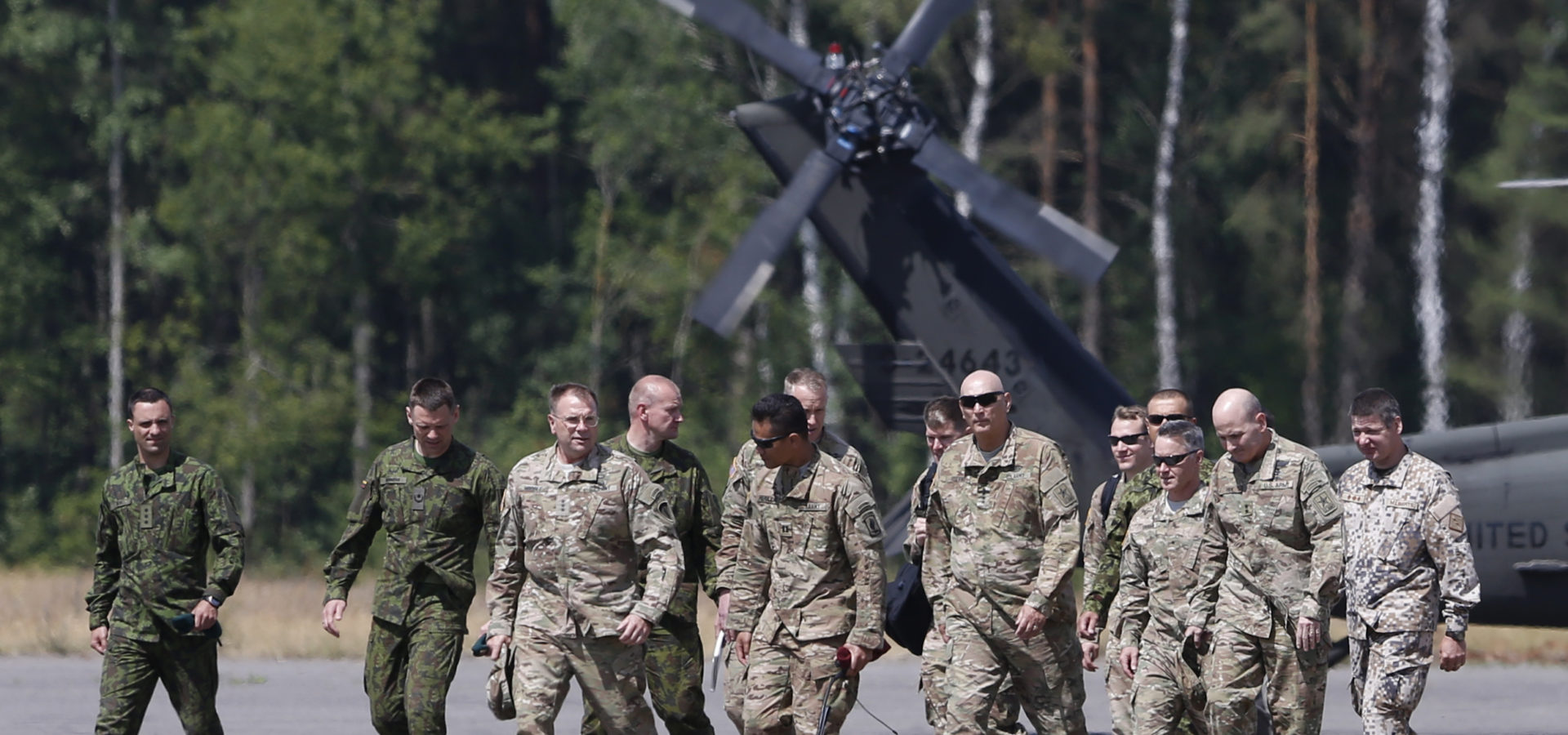The hue and cry over the possibility of a Russian attack on the Baltic states has grown all out of proportion. NATO is using its “Russian boogeyman” campaign to boost its military presence in the region. With Moscow accused of harboring evil plans, a robust military infrastructure is emerging in the immediate proximity of Russia’s borders. The US footprint is huge. Whatever Russia does (such as deploying its forces or conducting military exercises), it is presented by the Western media as a demonstration of hostile intent, while NATO’s highly provocative behavior is kept out of the spotlight. Any nation would be concerned over war preparations on its doorstep that are being conducted by an unfriendly alliance. Anyone who is impartial would confirm that Moscow’s concern is more than justified.
The US Defense Department’s 2019 fiscal budget became law on Aug. 13. It allocates $6.5 billion for the European Defense Initiative (EDI), $2 billion more than the previous fiscal budget, and nearly double the $3.4 billion the military received in fiscal 2017. The increase is evidence of the focus on building up a robust military force to threaten Russia. Infrastructure improvements in the Baltic states and Poland are a high priority.
According to the Lithuanian Defense Ministry, the updates to the Lithuanian armed forces’ Kazlų Rūda training ground, in the district of Marijampolė, to get it up to NATO standards, are almost complete. The facility will be used to train air crews and controllers. This is a joint project with the United States, funded through the European Reassurance Initiative. American B-52 strategic bombers have already dropped dummy munitions there. The firing range was part of the NATO Saber Strike exercise that was held in June. US National Guard soldiers are there to prepare Kazlų Rūda for another exercise.
The training ground is less than 60 km. from the Russian border. This is a risky move. On Aug. 7, a Spanish warplane accidentally fired an air-to-air missile over Estonia in the Pangodi area of Estonia’s Tartu county, less than 50 miles from that country’s eastern border with Russia. Suppose it had been an air-to-surface missile that went astray and landed on Russian territory? Why should NATO’s training events be conducted so dangerously close, making the alliance responsible for such perilous possibilities?
In July, the Lithuanian Defense Ministry signed a contract with the NATO Support and Procurement Agency (NSPA) in regard to infrastructure development projects that will significantly improve the training conditions. Thirteen facilities are to be completed for the Lithuanian armed forces by 2021. According to Vice Minister of National Defense Giedrimas Jeglinskas, the scale of the NATO deployments necessitates a larger military infrastructure to accommodate those forces. Once the upgrade is completed, Kazlų Rūda will be the only military facility in the country able to host and provide logistics for a brigade-size force including hardware. The modernization program also applies to the Gen Silvestras Žukauskas training ground — a joint project funded through Lithuania’s military budget, the NATO Security Investment Program, and the US European Reassurance Initiative. The NATO Security Investment Program (NSIP) is also financing the construction of facilities to accommodate the NATO Air Policing Mission, Host Nation Support, military training grounds, and, in part, the NATO Force Integration Unit.
Estonia’s Amari air force base near Russia’s border is another facility that is being updated to support American A-10, F-15, F-16, F-22, and F-35 aircraft, which will include refueling infrastructure as well as special ops forces.
The Baltic states signed Status of Forces Agreements (SOFAs), allowing the presence of American forces within their borders as far back as early 2017.
In May, the foreign ministers of the Baltic states paid a group visit to Washington to ask for a larger US military presence in their countries. Back then, they said the current build-up would only be the starting point for a larger effort. So far NATO has deployed four battalion-sized battle groups (roughly 4,500 troops) to Estonia, Latvia, Lithuania, and Poland. In June, all three Baltic states came out in support of the idea of building a permanent US military base in Poland.
Added to this is the ongoing militarization of the Scandinavian peninsula that goes largely unnoticed. And the rearming of Poland. And NATO’s build-up of logistics infrastructure in Eastern and Northern Europe. And the formation of a military alliance between the US and two northern European states: Sweden and Finland. And the US Air Force presence that has expanded in Eastern Europe. Don’t forget the tensions in the Black Sea near Russia’s shores. Russia is being confronted by 29 NATO member states.
Given all this, can anyone claim that Moscow’s concerns are unjustified? NATO talking about how Russia is threatening the Baltic states (or whoever) is like the pot calling the kettle black. The media should be paying more attention to the alliance’s war preparations so that readers could form a rational opinion about who is really threatening who and whose behavior is provocative.
Top Photo | U.S. Army Chief of Staff Gen. Raymond Odierno, center, arrives to attend in the combined Lithuanian-U.S. training exercise at the Gaiziunai Training Area some 110 kms (69 miles) west of the capital Vilnius Lithuania, Tuesday, July 7, 2015. Mindaugas Kulbis |AP
Source | Strategic Culture Foundation


